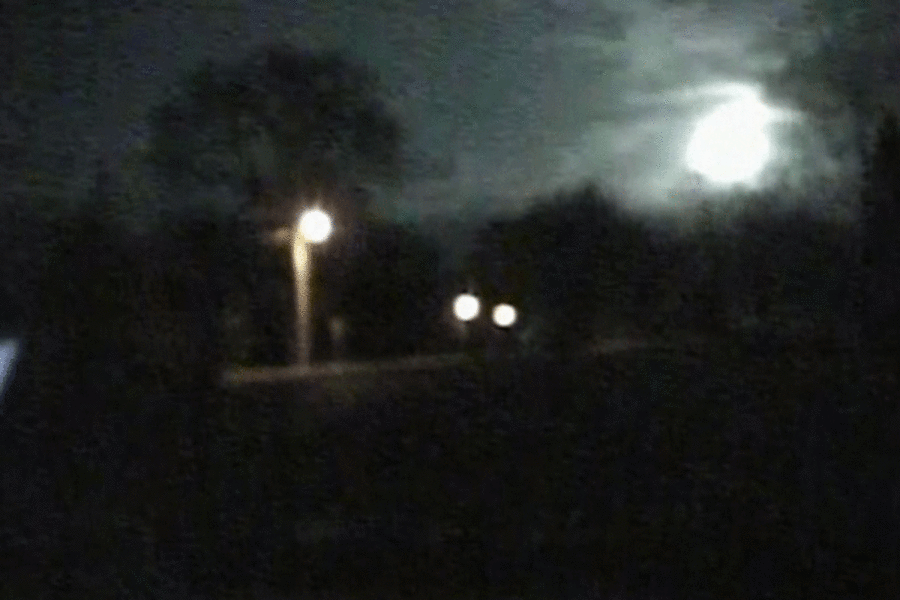Gigantic fireball from meteor shower turns night into day
Loading...
| Milwaukee
A large meteor streaked across the Midwestern sky momentarily turning night into day, rattling houses and causing trees and the ground to shake, authorities said Thursday. There were no immediate reports of injuries.
Witnesses say the meteor lit up the sky Wednesday about 10:10 p.m. National Weather Service offices across the Midwest said it was visible from southwestern Wisconsin and northern Iowa to central Missouri.
Radar information suggests the meteor landed in the southwest corner of Wisconsin, either Grant or Lafayette counties, said Ashley Sears, a meteorologist with the National Weather Service's Milwaukee office. Officials in both counties said no one reported seeing a meteorite or crater.
Lafayette County Sheriff Scott Pedley said his office received multiple reports of a very bright light in the sky followed by houses and the ground shaking.
"There were reports of four to five minutes of explosions or rumbling," he said. He couldn't say what the sound was but speculated it may have been a sonic boom if the meteor broke the sound barrier.
A dashboard camera in the squad car of a Howard County sheriff's deputy in Iowa caught a glimpse of the fireball. In the video, the object streaks toward the ground, then swells and brightens in an apparent explosion before disappearing behind a distant clump of trees.
As large as the halo seems, history suggests the object might only be the size of a softball or basketball, said James Lattis, the director of the University of Wisconsin Space Place in Madison.
"These things are surprisingly small," Lattis said. He noted meteor showers can produce streaks visible from miles away even though the objects that are burning up might be the size of a grain of sand.
Lattis said because Wednesday's meteor apparently exploded, it's possible it will never be recovered. Unless the fragments landed on a rooftop, car, yard or other prominent place, they could be virtually indistinguishable from other rocks and pebbles on the ground.
"In that case it will just be luck if anyone happens to recognize it," he said.
Lattis said there's even a chance the sighting wasn't a meteor, noting an object such as a broken satellite part could create a similar effect. A message seeking comment was left with NASA.
Sean Thompson was watching television in his Iowa City, Iowa, apartment when a bright light caught his eye for about 10 seconds before it disappeared.
"It was somewhat alarming to me," Thompson said. "I've seen shooting stars, but I've never seen something jetting across the sky with flames shooting off it."
Some initially speculated the object was part of a two-week-long meteor shower currently under way. But Lattis said it most likely wasn't part of the Gamma Virginids shower because it came from the opposite direction.
The Gamma Virginids shower began April 4 and is expected to last through April 21. Thursday is expected to be the second straight day of peak activity.
Meteors are caused by bits of space debris, such as that left by a comet. Dust and debris burn up in the atmosphere and create streaks of light. Unlike other celestial sightings that require a telescope or binoculars, the best way to watch a meteor shower is with the naked eye.





